Roof Access Hatches & Ceiling Access
Accessing roof areas safely is crucial for maintenance, inspections, and height safety.
Our solutions include roof access hatches, fold-down ladders, and ceiling void ladders, all designed to provide safe and controlled access through internal spaces.
We offer both proprietary and custom height safety solutions to meet your specific project requirements.
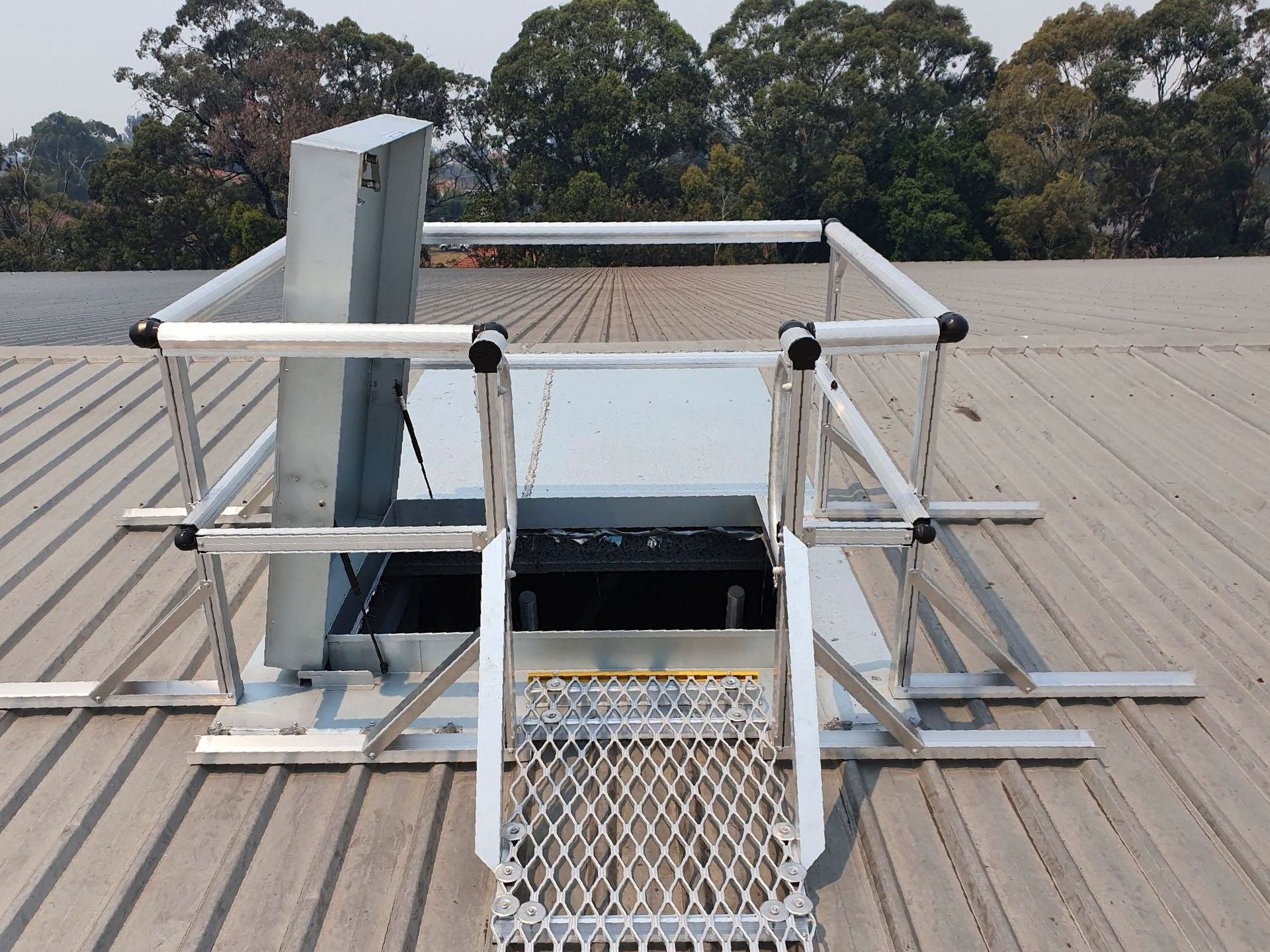
Roof Hatches are access points installed on the roofs of buildings, designed to provide safe and easy entry for maintenance, inspection, and emergency purposes.
They are essential in situations where internal access to the roof is required, such as in commercial, industrial, and residential buildings.
When Do You Need a Roof Hatch?
- Routine Maintenance. For regular roof inspections and maintenance tasks.
- HVAC Access. To service rooftop HVAC systems and other equipment.
- Emergency Access. Providing a safe exit route during emergencies.
- Construction and Renovations. Ensuring easy safe access during building projects and roof maintenance.
Roof hatches enhance safety by offering a controlled and secure roof and ceiling access method, reducing the risk of falls and accidents.
Everything You Need to Know About Roof Hatches
How Roof And Ceiling Access Hatches Work?
Roof hatches are specialised access points installed on the roofs of buildings to provide safe and secure entry for maintenance, inspections, and other necessary activities.
Here's how they work.
Design and Structure
Roof hatches are typically made of durable materials like galvanised steel or aluminium (more durable) to withstand various weather conditions and provide long-lasting performance. They are equipped with insulated covers to prevent energy loss and weather seals to keep out the elements.
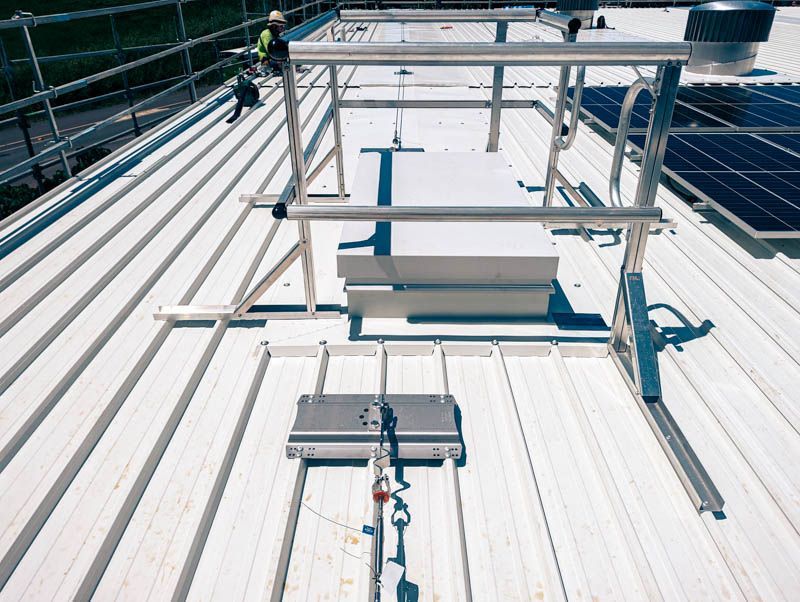
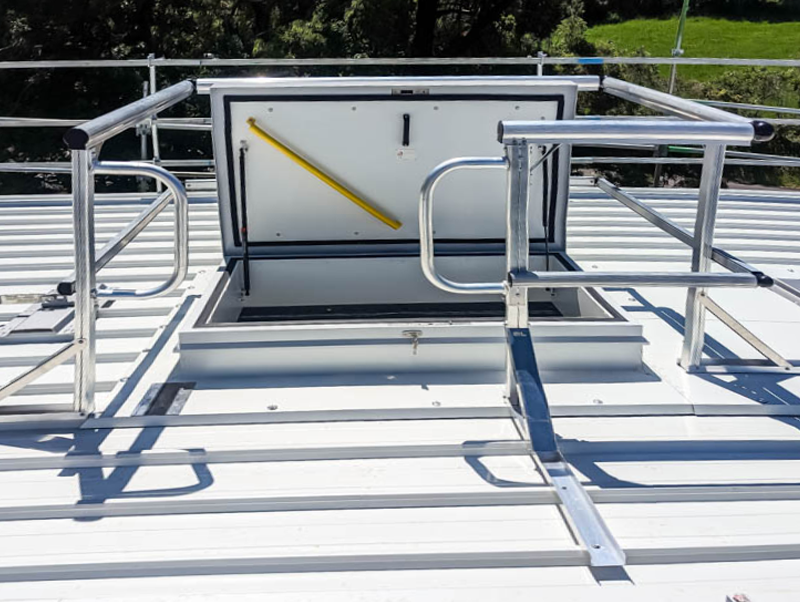
Access Mechanism
Roof hatches feature a lid that can be opened and closed, usually with the help of gas spring struts or torsion bars, which make lifting the lid easier and safer.
Some roof hatches also come with locking mechanisms to prevent unauthorised access.
Safety Features
Many roof hatches are designed with integrated safety features such as non-slip surfaces, handrails, and ladder systems to ensure safe ascent and descent for users.
Types of Roof Hatches
+ Standard Roof Hatches
Basic models designed for general access.
+ Skylight Roof Hatches
Combines access with natural light entry.
+ Fire-Rated Roof Hatches
Provides fire resistance for added safety.
+ Security Roof Hatches
Enhanced security features to prevent unauthorised access.
Applications
+ Commercial Buildings
For maintenance, inspections and access of
HVAC systems, solar panel installation and maintenance access, and electrical equipment access on roofs, rooftop advertising banners, rooftop surveillance, satellite maintenance access, fire sprinklers installation and maintenance and any other rooftop installations.
+ Industrial Facilities Roof Access
To access machinery and equipment installed on roofs.
+ Civil Constructions
For access to attics, roof terraces, and solar panel installations and maintenance.
+ Emergency Access
Provides an additional escape route in case of emergencies.
Benefits of having a roof hatch in your building or facility
+ Safety
Provides a secure and controlled access point, reducing the risk of falls and accidents.
+ Convenience
Allows easy access for maintenance and inspection tasks, saving time and effort.
+ Energy Efficiency
Insulated designs help maintain building energy efficiency.
+ Versatility
Available in various sizes and configurations to suit different building requirements.
+ Aesthetic Architecture Design Considerations
For buildings where aesthetic considerations are important, custom hatches can be designed to blend seamlessly with the architectural style and appearance of the structure.
+ Space Constraints
In situations where space is limited, custom access hatches can be designed to maximise available space and ensure safe, efficient access.
+ Compliance with Specific Standards
Some constructions projects require compliance with unique safety or building / facility standards that regular hatches do not meet. Custom hatches can be designed to adhere to the specific regulations.
+ Incorporating Additional Features
When there is a need for additional features like skylights, ventilation, or fire-rated capabilities, custom hatches can be designed to integrate these elements seamlessly.
Roof Hatches Installation and Maintenance
+ Professional Installation
It's recommended to have your access systems installed by professionals to ensure they meet safety and building codes.
+ Regular Inspections
Periodic inspections and maintenance are necessary to ensure the hatch remains functional and secure.
+ Compliance
Ensure that the roof hatch complies with relevant safety standards and regulations.
Choosing the Right Hatch
+ Material
At Safetylyne we use aluminum for higher durability and longevity.
+ Size and Configuration
Select the appropriate size and design to meet your specific access needs.
+ Safety Features
Consider additional safety features like handrails and guiderails, non-slip surfaces and roof walkways for enhanced safety.
Does My Roof Hatch Need a Guardrail?
When it comes to roof safety, installing guardrails around roof hatches is an important consideration.
Here are some factors to help determine if your roof hatch needs a guardrail.
Safety Regulations
Many safety standards and regulations, including AS/NZS 1891.4:2009 and AS/NZS 1657, recommend or require the installation of guardrails around roof hatches to prevent falls and ensure the safety of workers.
Roof hatches are an essential component of building and roof maintenance and safety, providing a reliable access point to rooftops for various purposes.
By understanding their function, applications, and benefits, you can make an informed decision about the right roof hatch for your needs.
How Long Does It Take To Install a Roof Hatch?
- Usually, it takes under 24 hours. We complete most of the works at our warehouse, which makes installations and site works quick and efficient.
Our installation job can take from half an hour to half day or a full day of work, depending on the scope.
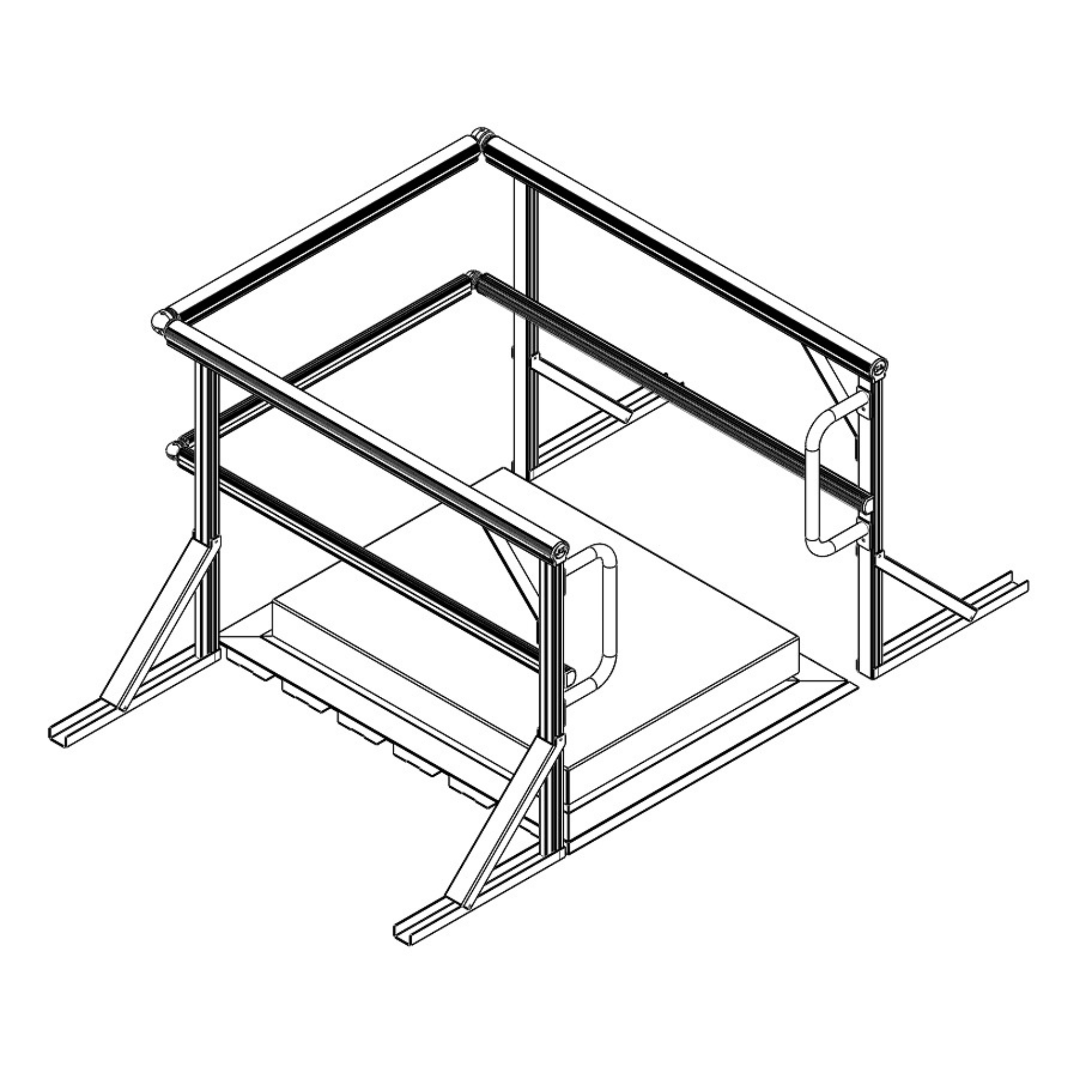
Australian Regulations for Roof Hatches
In Australia, the design, installation, and use of roof hatches are governed by strict safety regulations to ensure that workers and personnel can access roof areas safely, particularly in commercial and industrial settings. The primary focus of these regulations is to prevent falls and other accidents associated with working at heights.
1. Compliance with AS/NZS 1657:2018
Roof hatches must comply with the Australian Standard AS/NZS 1657:2018, which provides guidelines for fixed platforms, walkways, stairways, and ladders, including roof access hatches. This standard ensures that all access points, such as hatches, are safe, properly constructed, and able to prevent accidents. It covers the materials used, structural integrity, and the safety features that must be included, such as guardrails and secure locking mechanisms.
2. Fall Protection Requirements
Under the Work Health and Safety (WHS) Regulations, roof hatches are required to include fall protection measures. This may include the integration of guardrails, safety harness attachment points, and self-closing mechanisms to prevent accidental falls. The height safety equipment must also be regularly inspected and maintained to remain compliant.
3. Safe Work Australia Guidelines
Safe Work Australia provides additional guidelines and codes of practice that influence how roof hatches are utilized on-site. These include risk assessments before accessing a roof, ensuring all workers are trained in height safety, and using roof hatches that are designed for easy and safe access. Employers are required to ensure that any roof hatch in use meets these safety standards and does not pose a risk to workers.
4. Building Code of Australia (BCA) Compliance
Roof hatches must also comply with the Building Code of Australia (BCA), which mandates specific construction and safety standards for building components. The BCA covers aspects like fire safety, structural integrity, and weatherproofing, all of which impact the design and installation of roof hatches.
5. Maintenance and Inspection Requirements
Regular inspection and maintenance of roof hatches are mandatory under Australian regulations. This includes checking for signs of wear and tear, ensuring that locking mechanisms and safety features are functional, and verifying that the hatch remains secure and compliant with all relevant standards.
Conclusion
Adhering to these regulations is crucial for ensuring the safety of workers accessing roof areas through hatches. Compliance with AS/NZS 1657:2018, WHS regulations, and the BCA ensures that roof hatches are safe, reliable, and fit for purpose. Regular maintenance and risk assessments further enhance safety, helping to mitigate the risks associated with working at heights.
For more detailed information, it's advisable to consult with a professional in height safety or refer directly to the relevant Australian standards and regulations.
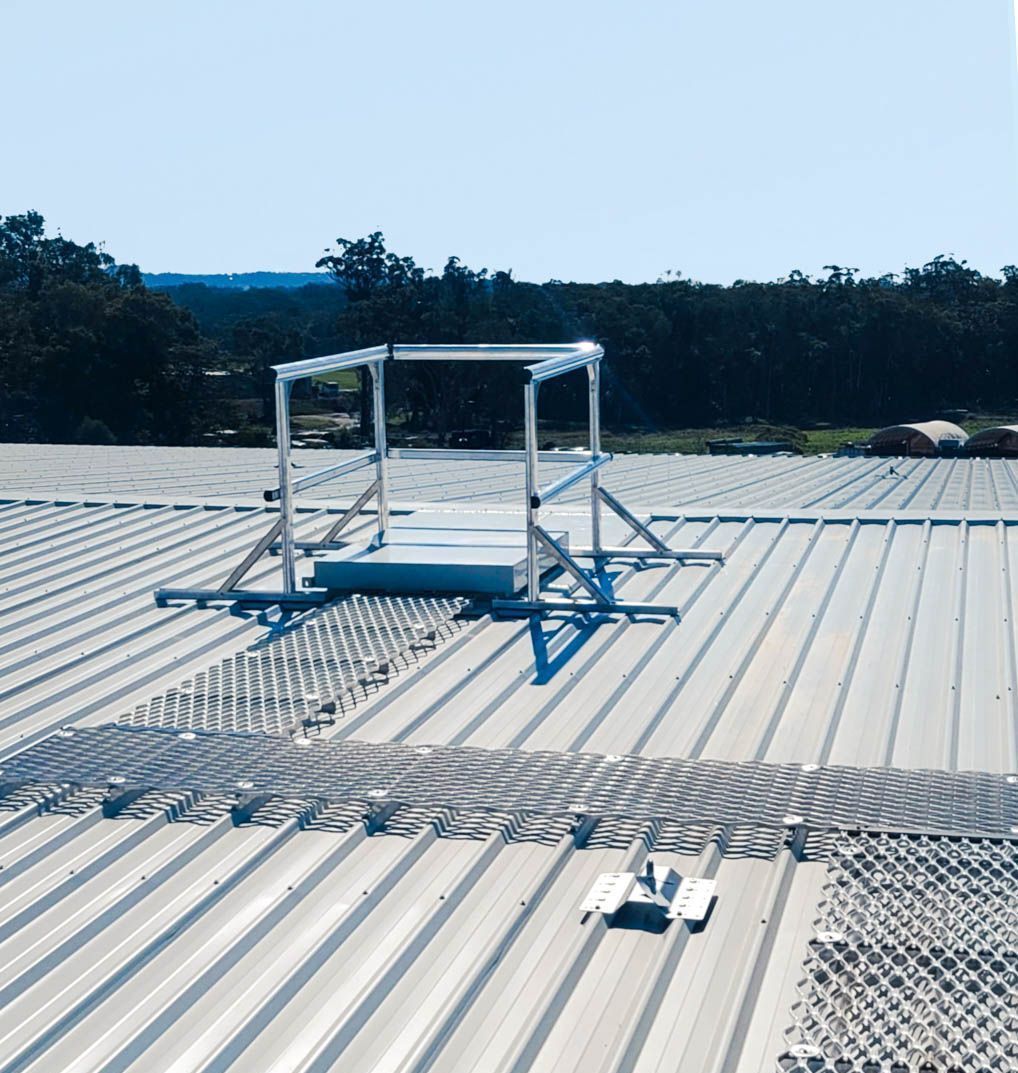
Roof hatches can also be strategically placed within a facility to provide safe and efficient internal access to different levels and heights.
For example, in cold storage facilities, roof hatches can be installed to connect various floors or compartments, allowing personnel to move between levels safely using internal stairs.
This application is particularly useful in environments where space is limited, and traditional stairways may not be practical.
Roof hatches designed for internal access ensure that movement between different heights inside a facility is secure, controlled, and compliant with safety standards.
Our roof hatches are corrosion-free and engineered to withstand harsh indoor and outdoor environments, making them ideal for use in facilities exposed to extreme temperatures, whether hot or cold.
Their robust design ensures durability and reliability in challenging conditions, such as those found in cold storage facilities, coastal areas, and industrial sites, providing long-lasting performance without compromising on safety.
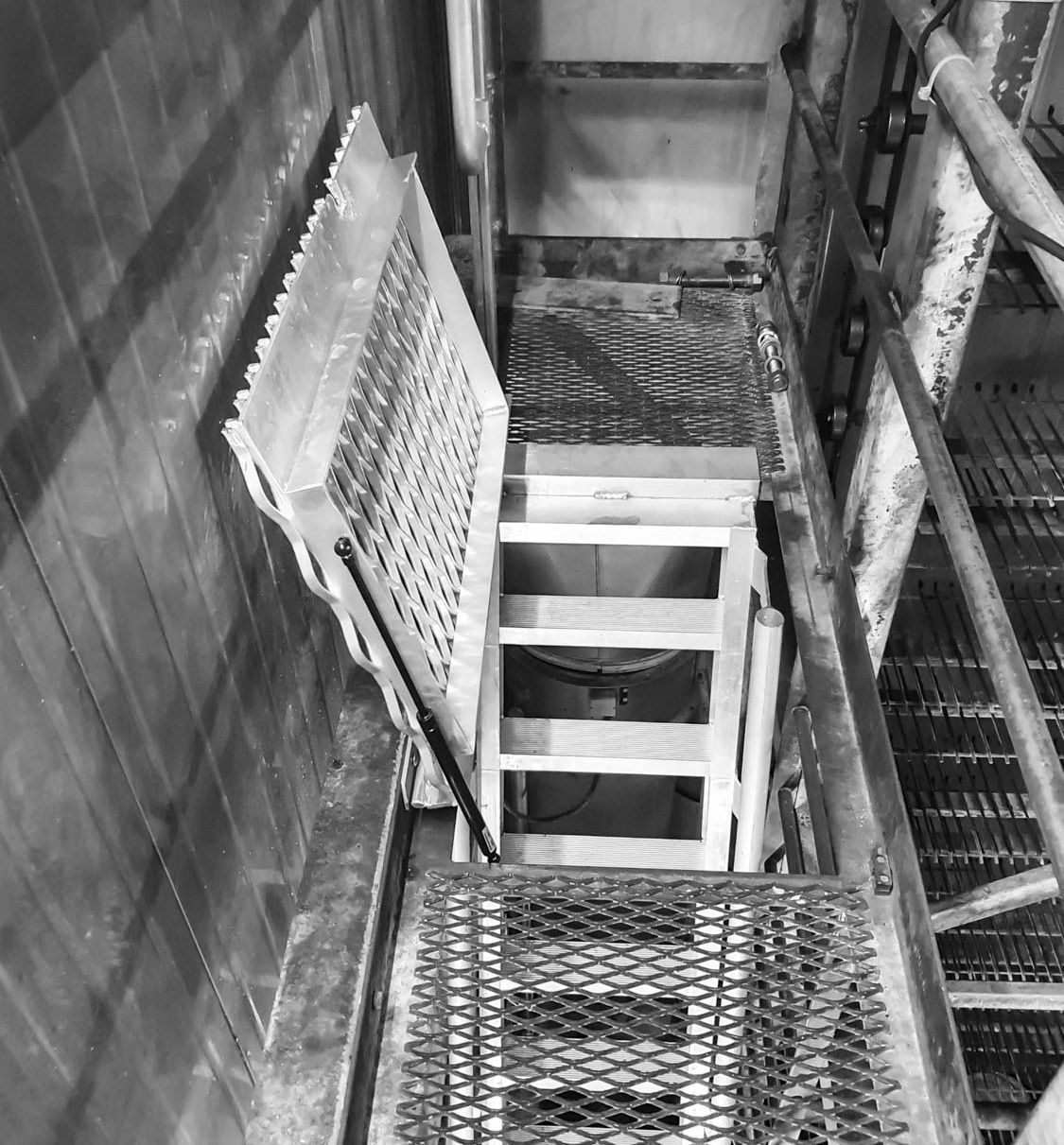
At Safetylyne, we find the best safety and compliant solutions for your building access.
We audit and assess your roof safety and find the quickest and most cost-efficient solutions for your building and facility. Our roof access systems are Australian made, compliant and durable.
We manufacture roof hatches and other access systems at our warehouse, which reduces work time and helps installing everything quickly on your site.
By understanding their function, applications, and benefits, you can make an informed decision about the right roof hatch for your needs.